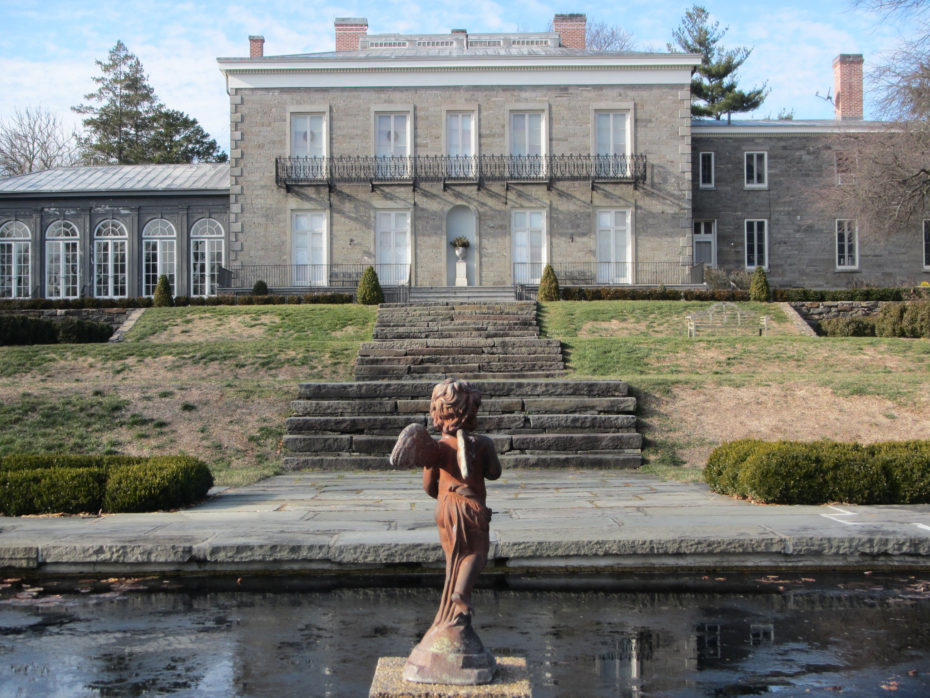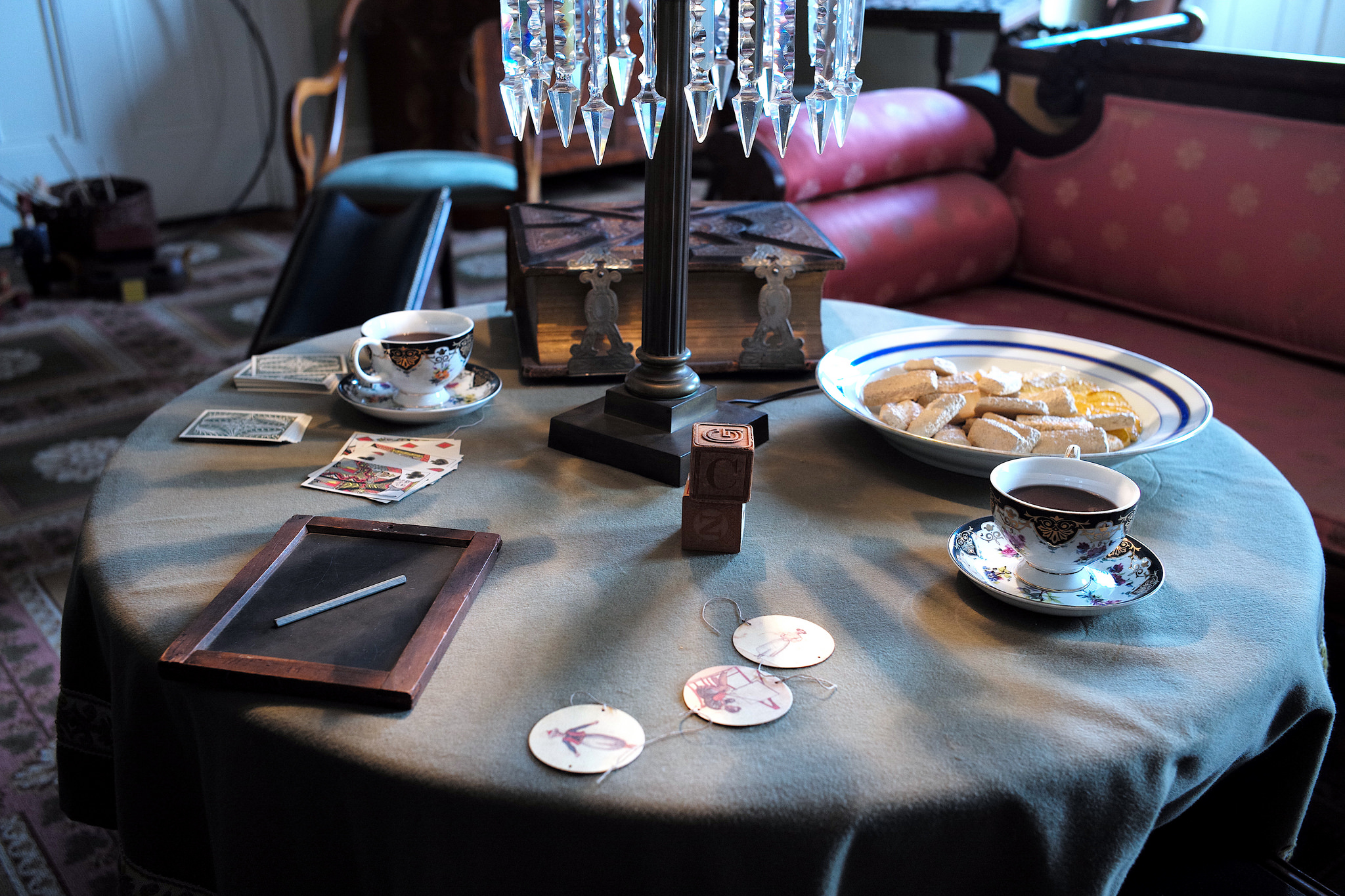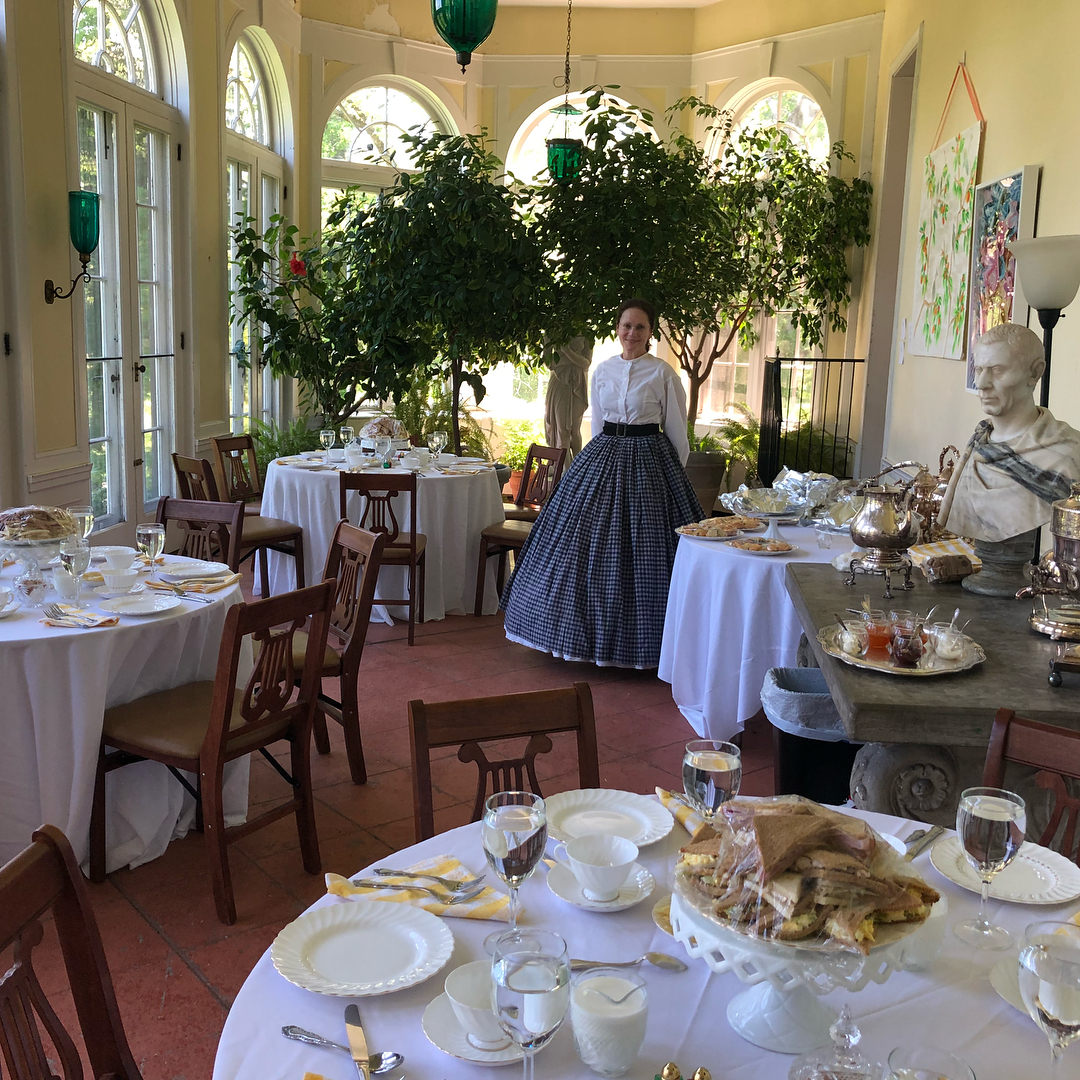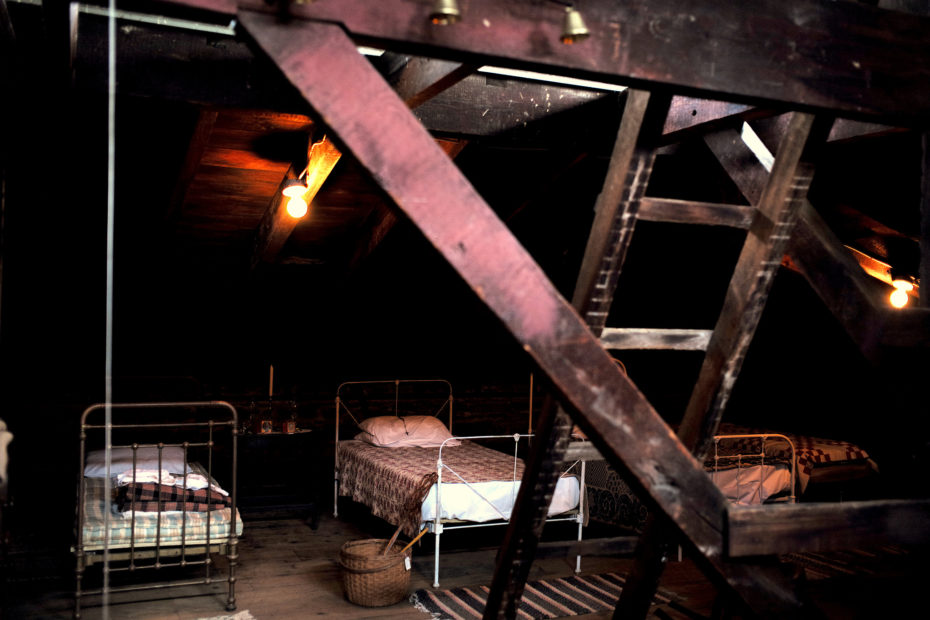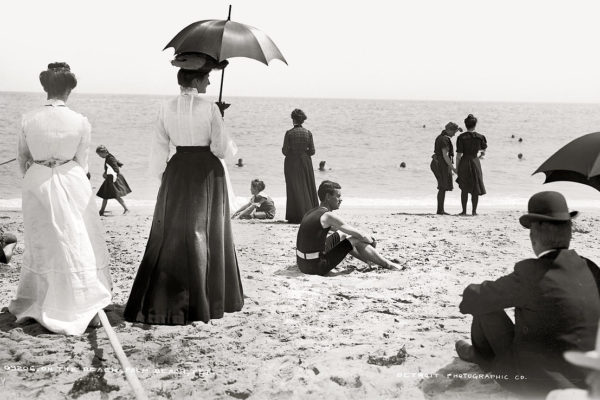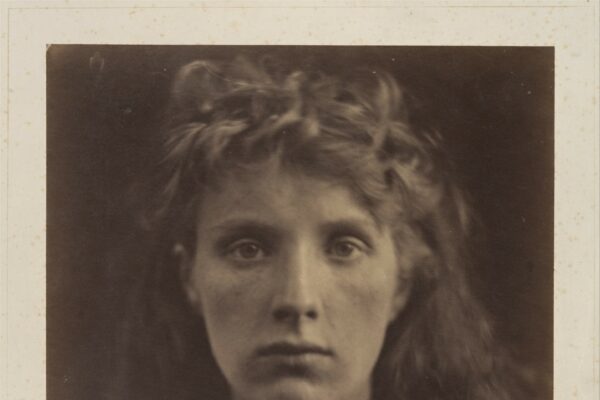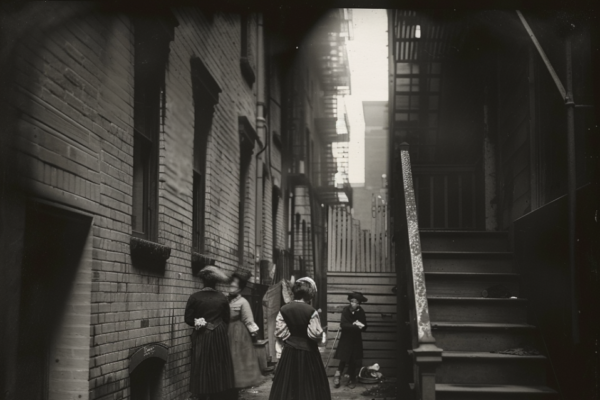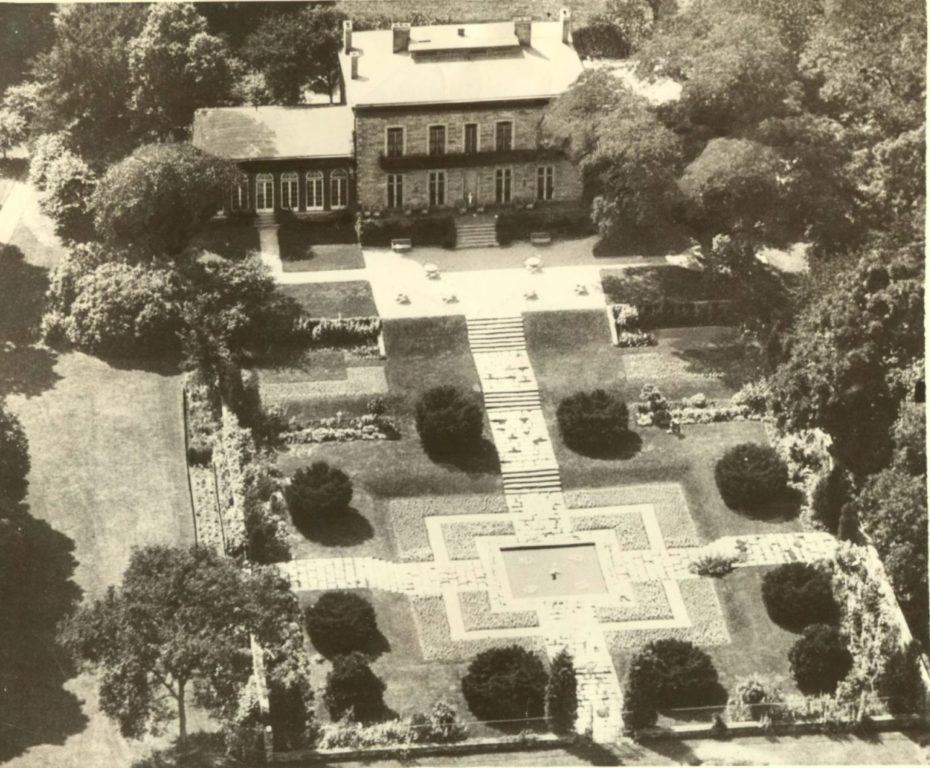
© Library of Congress
Bartow-Pell mansion is the last of her kind. Tucked down a narrow drive in the far reaches of Pelham Bay in the Bronx, the 348-year-old estate was once one of many retreats built for affluent New Yorkers to hang up their top hats, and relax in Downton Abbey-level splendour. As with many old American mansions, Bartow-Pell has her fair share of extravagant artefacts, ghost stories and– particularly here on the East Coast– early Native American history. We just so happened to be exploring it around the holidays, when the legend of its inhabitants takes on a special, ghosts-of-Christmas-past kind of glow…
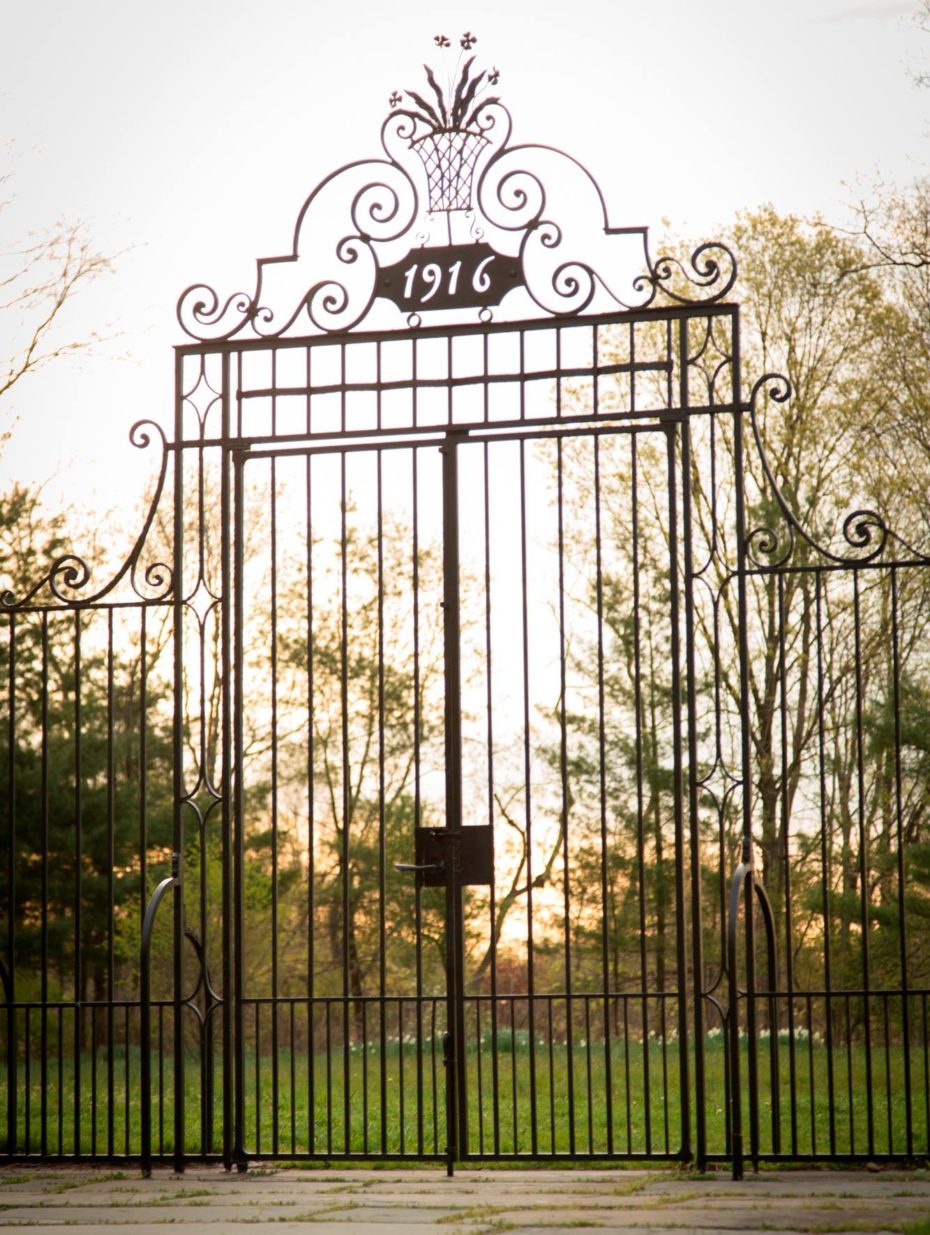
© Bartow Pell Mansion
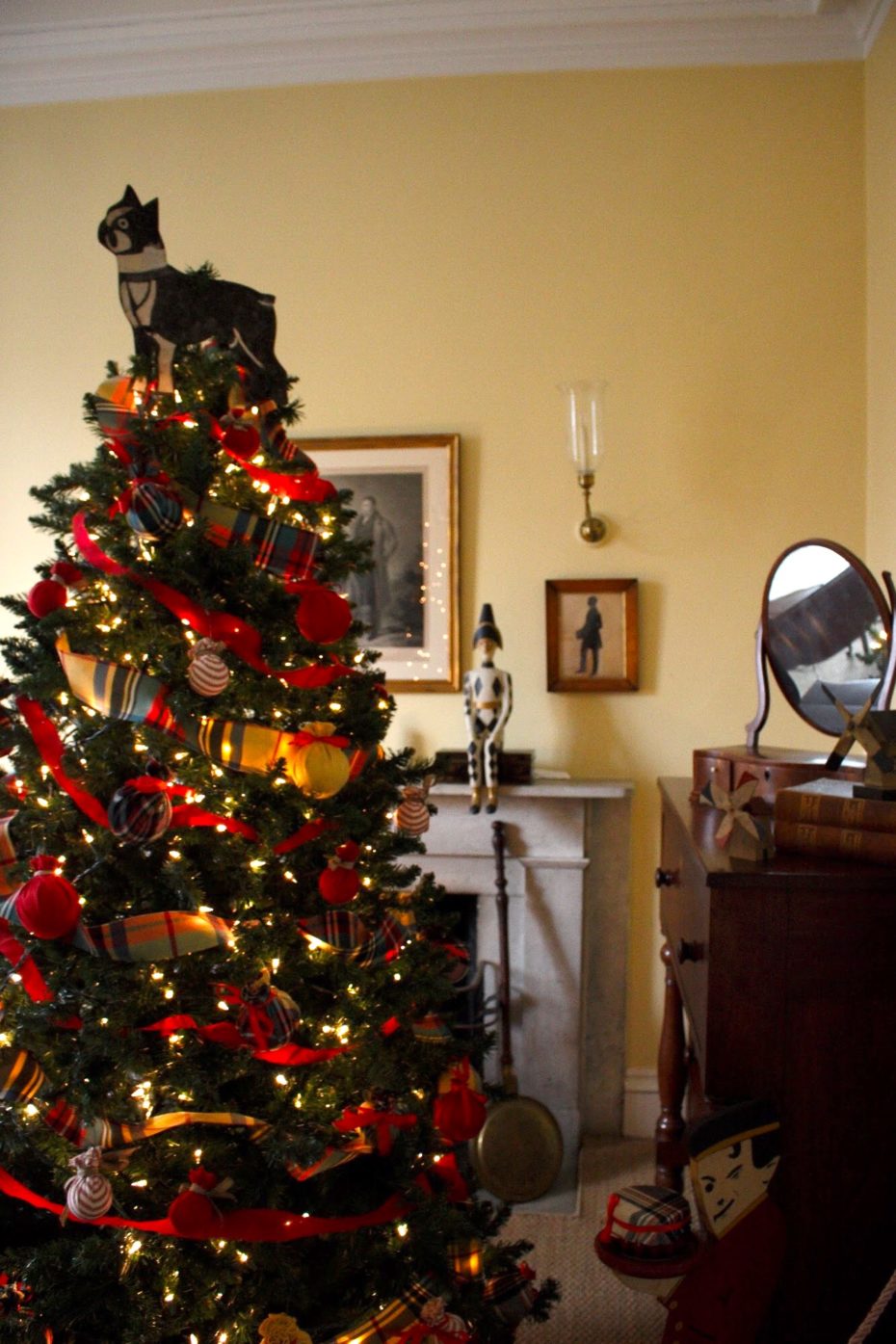
© MessyNessyChic

© Bartow Pell
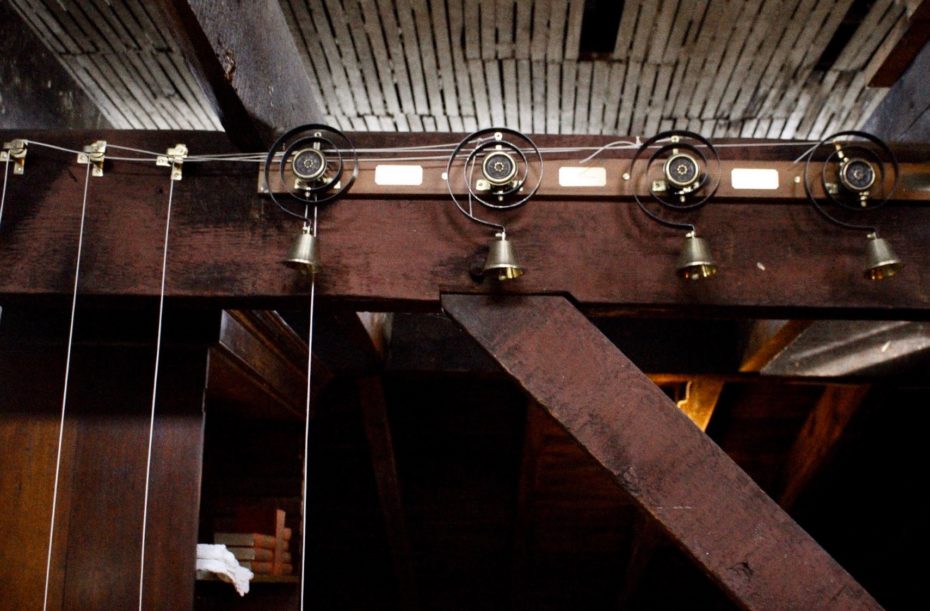
© MessyNessyChic
The story of Bartow-Pell stretches back to 1654, when the English physician Thomas Pell bought 50,000 acres from the Lenape Native Americans. Remember, this was a time when Dutch and English settlers were at each others’ throats for land, and Pell’s massive purchase was a huge win for Her Majesty. So much so, that the great white oak tree under which the land treaty was signed with the tribal Chief became its own celebrity– when it fell centuries later in 1912, it actually got an obituary in the paper. Today, the estate works with a local Native American organisation to preserve and teach indigenous craft, and a sharp eye will spot a wigwam on the pathway to the main house:
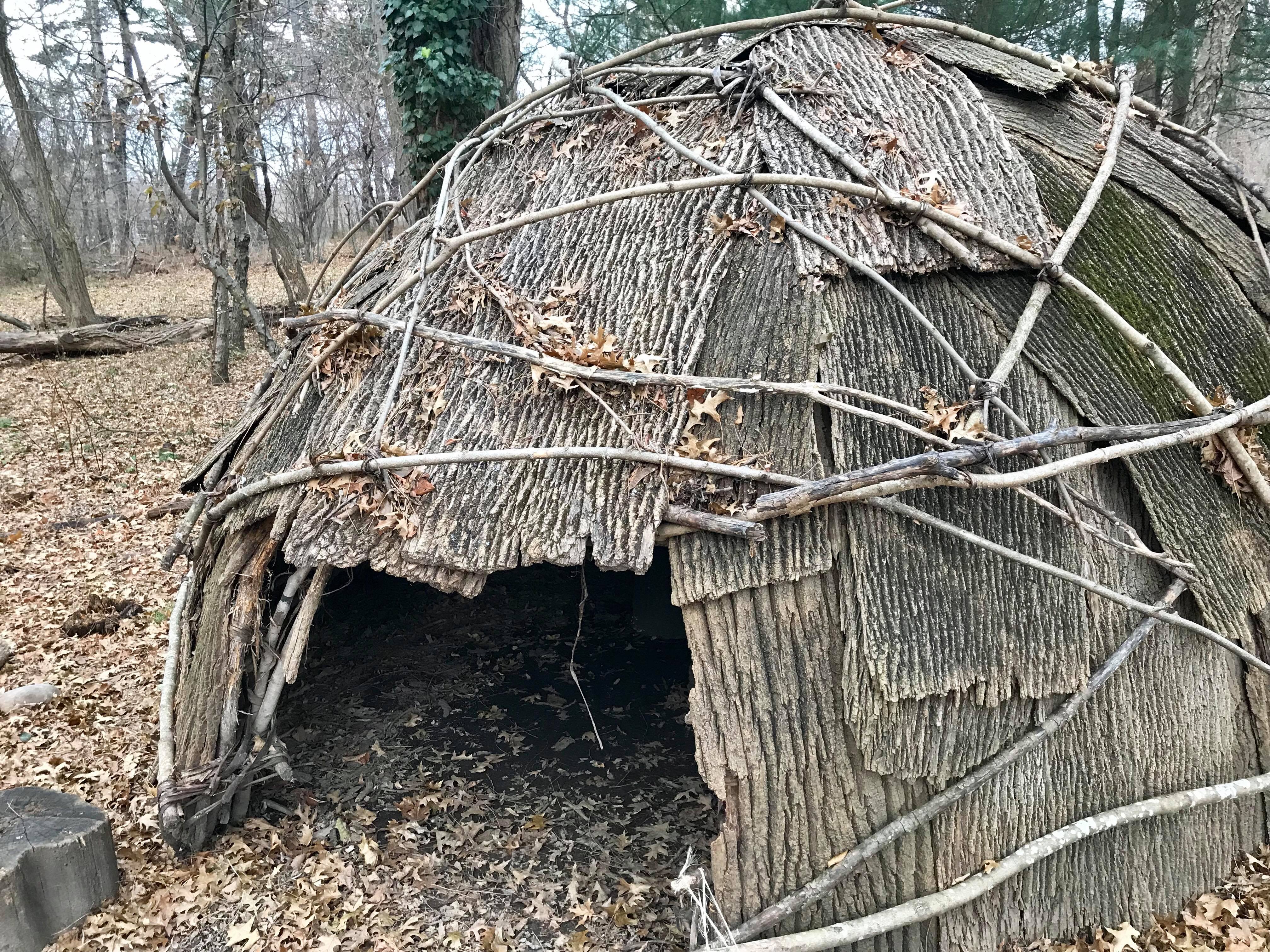
© MessyNessyChic
The Pells lived on the land for four generations, until the original house fell victim to the Revolutionary War. The estate was re-purchased by a Pell descendant in 1836 named Mr. Robert Bartow, a giant of the New York publishing world, who built the stately Greek Revival mansion we have today for his family:
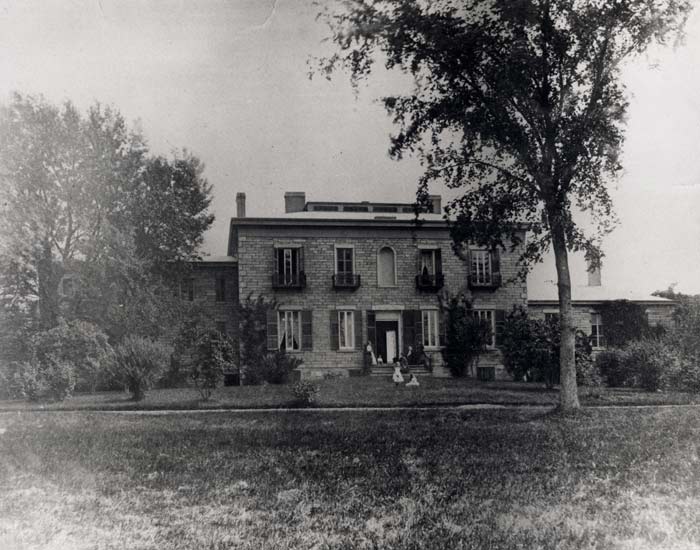
Clarina Bartow and children, Bartow Mansion, Pelham Bay Park,circa 1870, Bartow-Pell Mansion Museum
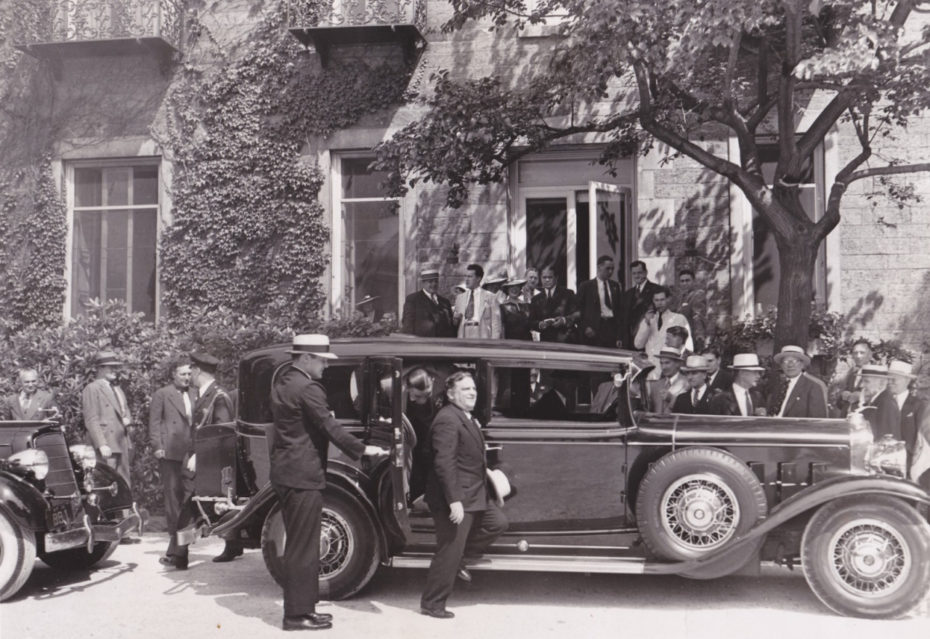
Bartow-Pell Mansion
There, the family lived in the utmost splendour. One can imagine Ms. Clarina Bartow and her children needlepointing in the various drawing rooms, or Mr. Bartow overlooking the bay to contemplate a business deal far away in Manhattan. Every inch of the home is still dripping in antiques worthy of– and even on loan from– the Metropolitan Museum of Art. With Christmas lights twinkling down every hall, and Childrens’ letters to Santa dangling like a chandelier, it feels every bit the holiday treasure chest…

© MessyNessyChic
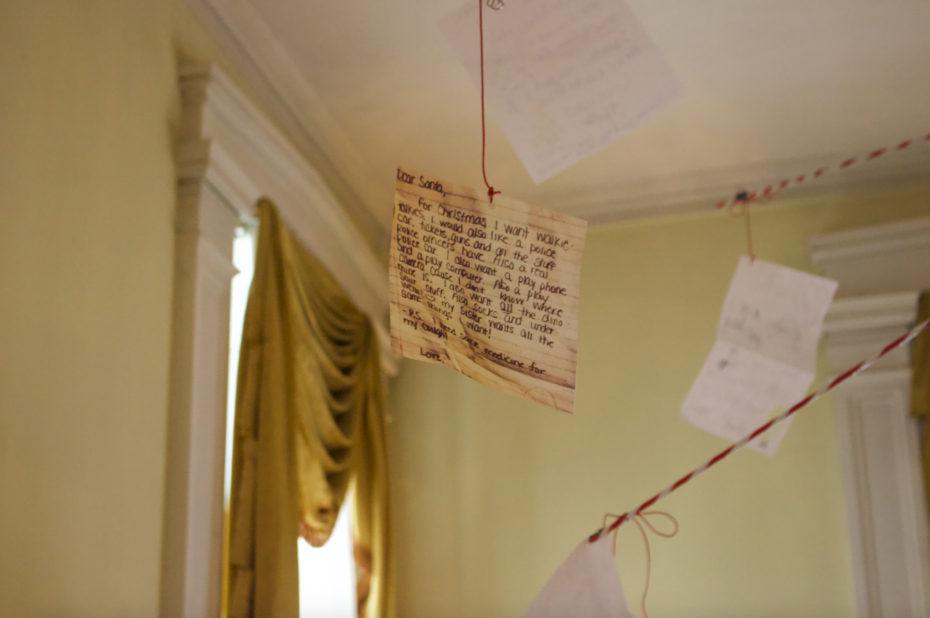
© MessyNessyChic

© MessyNessyChic
Today, the old orangerie still houses some fruit trees, and is used for local events and parties — all in period-appropriate fashion, naturally:
As we tour the space with the Museum Educator, Karen Lambdin, we’re also given a juicy little story about the carpet in an opulent blue room. “You know, it’s funny,” she says, “25 years ago Charles Aznavour actually purchased the carpet from this room, and cut it up to make pillowcases.” At dozens of thousands of dollars, it certainly made for some luxurious pillowcases.
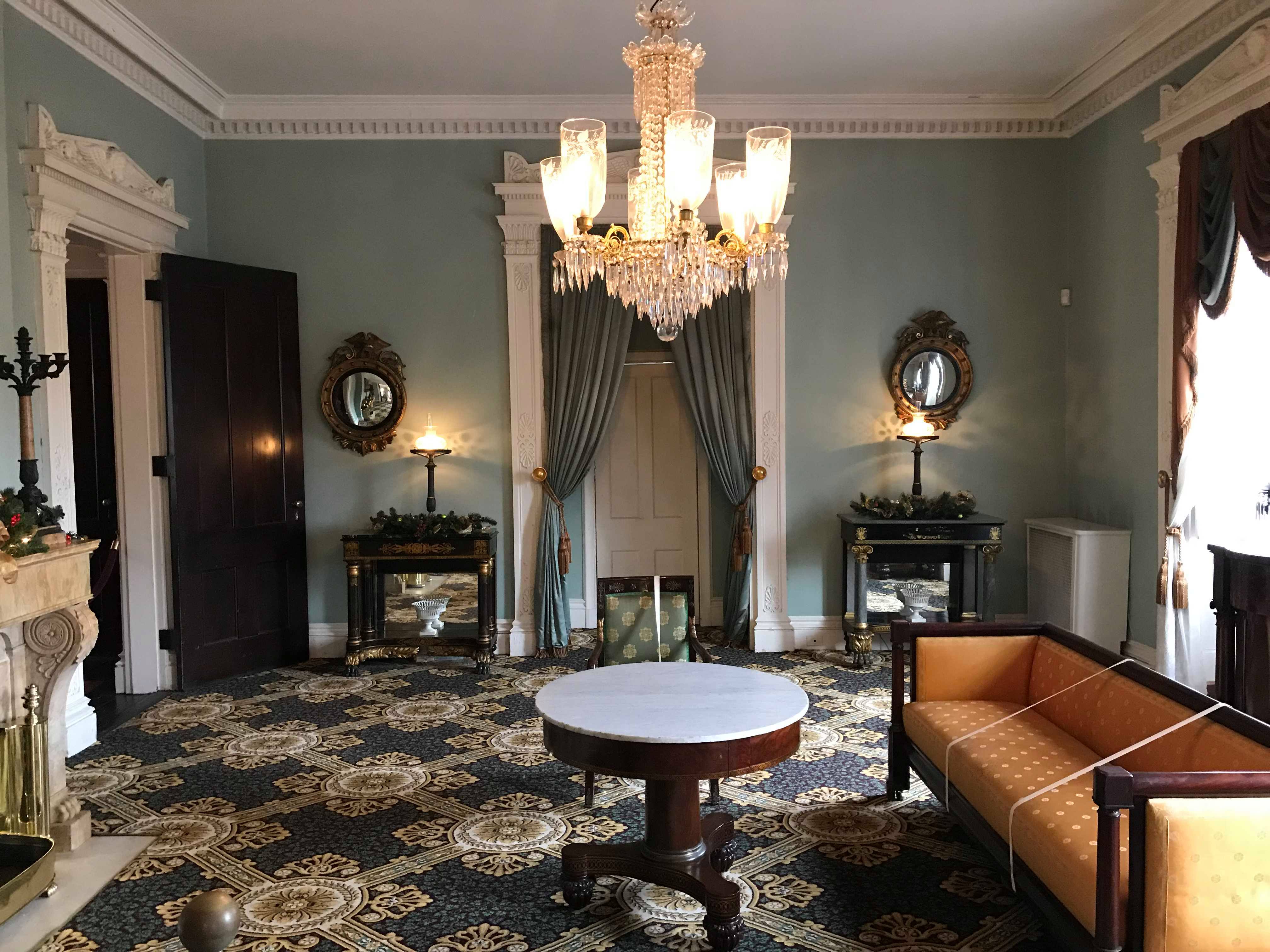
© MessyNessyChic
But the crown jewel of that treasure chest is a desk belonging to former Vice President Aaron Burr– as in, that guy who shot and killed Alexander Hamilton in a duel. Burr’s wife was actually a Bartow cousin, and the desk is one of the rare antiques we have today with ties to the family, which brings us to the more tragic part of our Christmas tale…
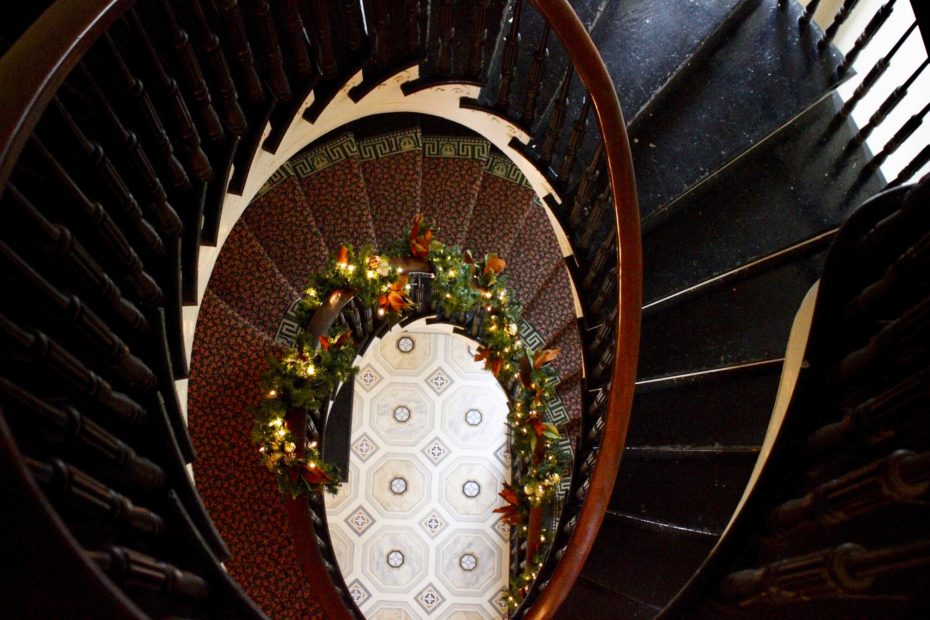
© MessyNessyChic
As you continue up the spiral stairs, you’re greeted with what appears to be an old painting of two women by a tree. It’s actually a hand-embroidered mourning scene, a weeping willow made of a dizzying amount of stitches that evokes memories of loss in the Pell family. Because…everybody kind of, well, died in the family and left no heirs to look after the estate…
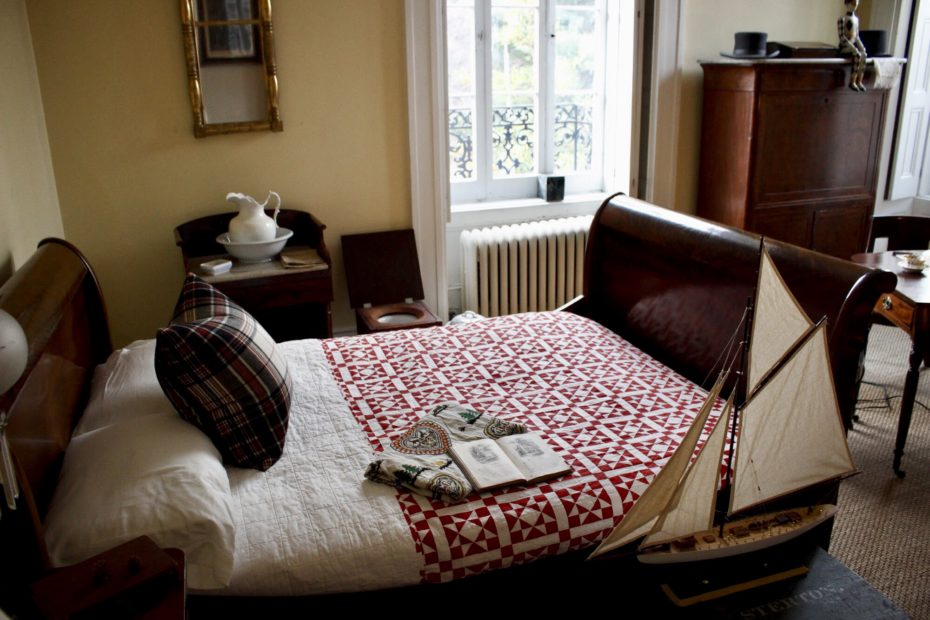
© MessyNessyChic
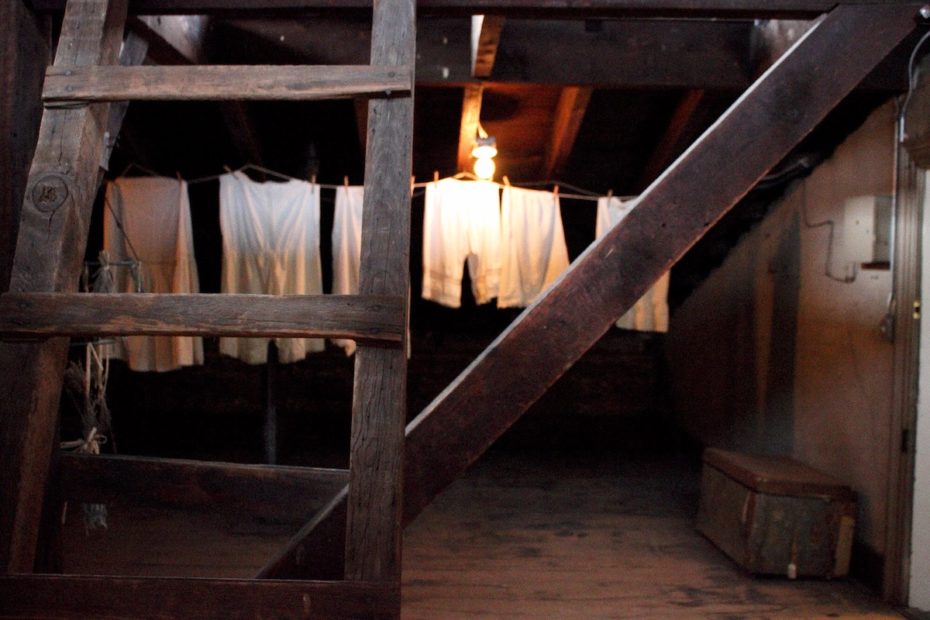
© MessyNessyChic
Sometimes those deaths were timely, but more often than not, they were tragic; being wealthy didn’t necessarily make you immune to disease. By 1888 the estate had been purchased by the State, and was left empty for years until the International Garden Club was allowed to take it under its wing in 1914.
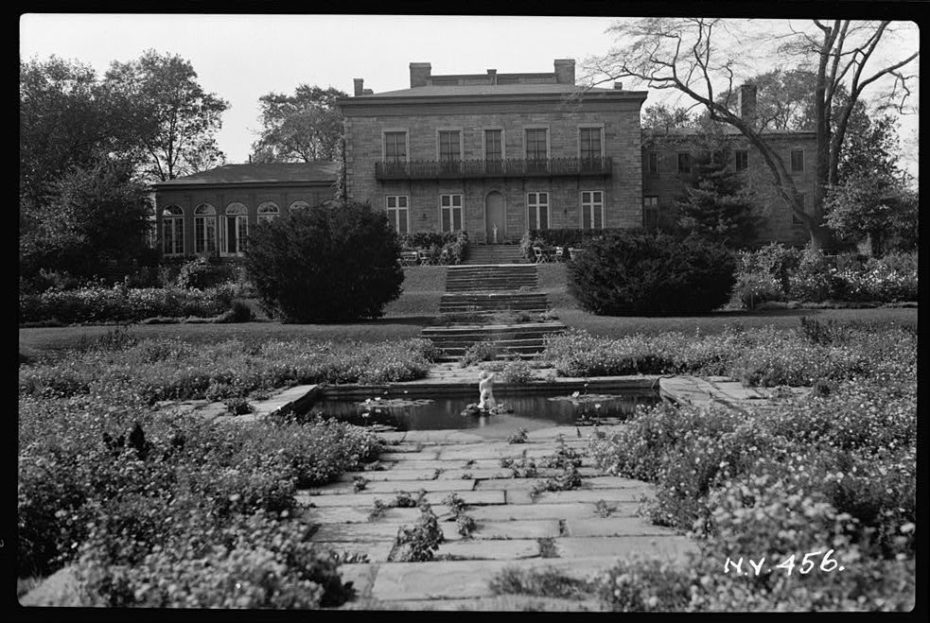
The Club was a worthy and passionate guardian of the estate, who continued to evolve its grounds with the addition of formal gardens. It officially became a museum in the 1940s, with rooms paying homage to the family members and Irish servants who once lived there. Every October, the mansion offers tours with esteemed paranormal investigator Dan Struges, and addresses such mysteries as “who keeps leaving indentations on the Lannuier bed?” and “is there a child’s ghost on the third floor?” Needless to say, by the time you get to the attic servant’s quarters you feel a little bit as if you’re being watched…
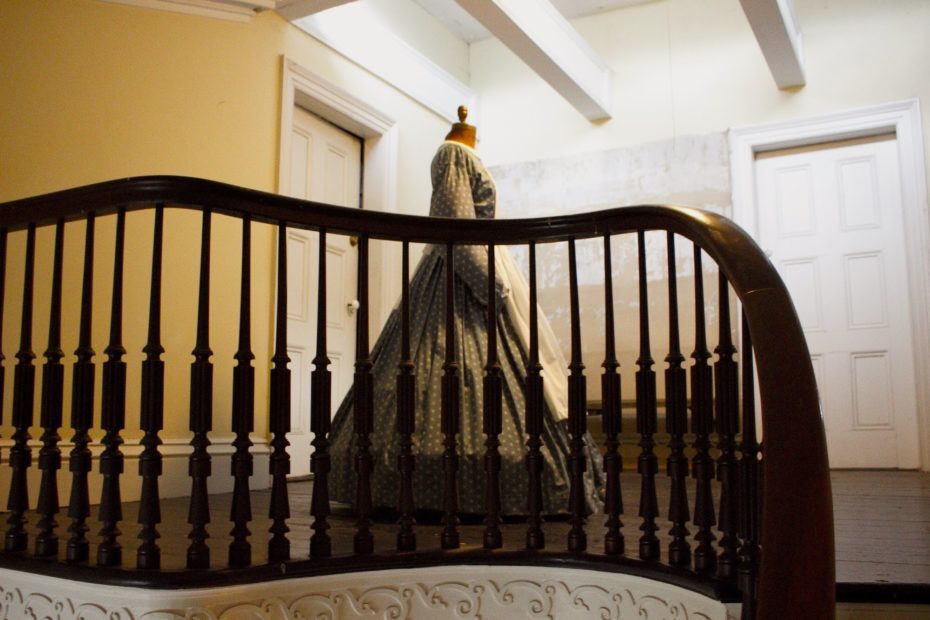
© MessyNessyChic
Before you leave the estate, stop by the carriage house to its left. There, you’ll find some handsome examples of how the family arrived at the estate in style…
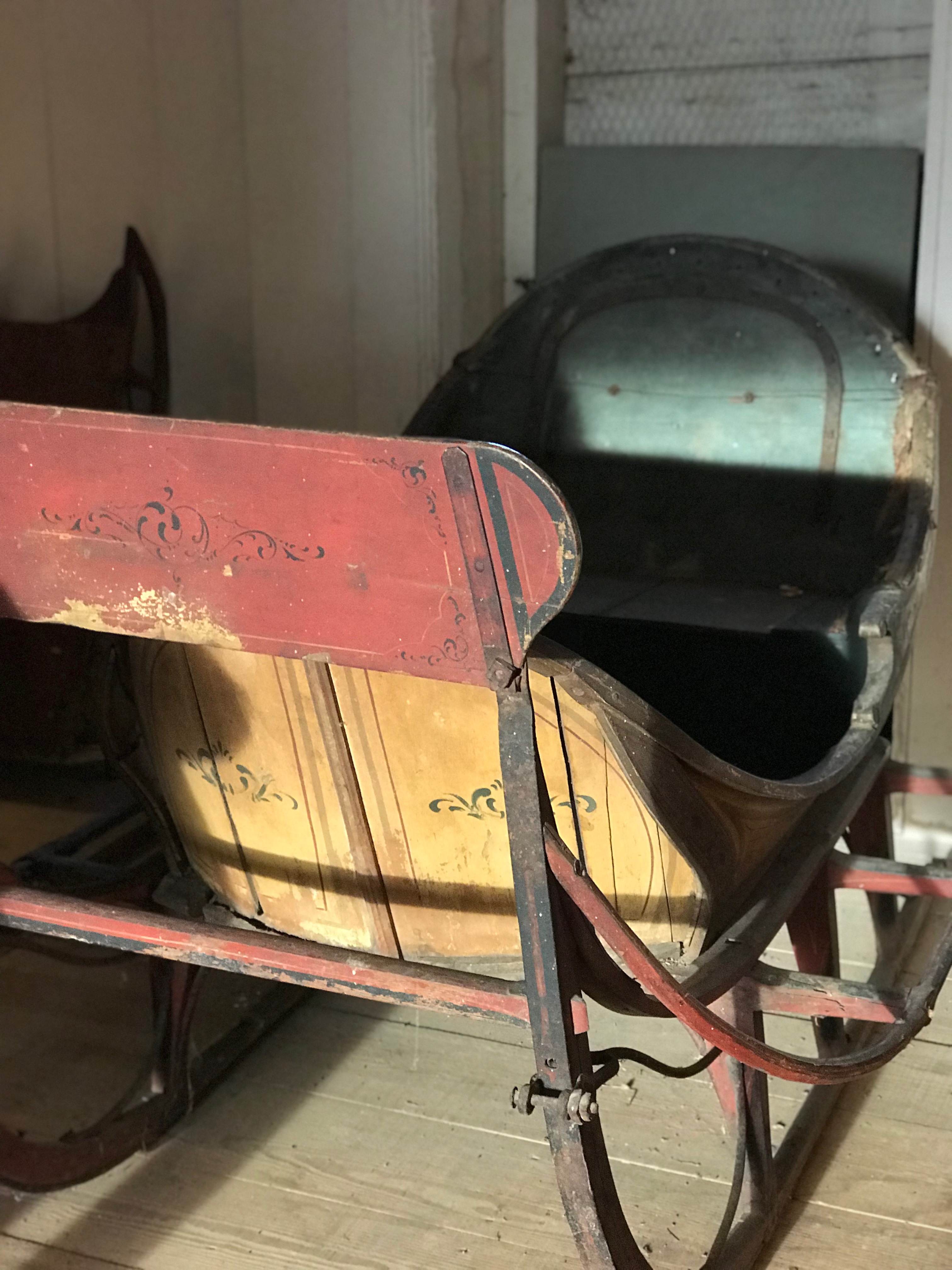
© MessyNessyChic
From the haystacks in the carriage house, to the tables set with polished, period china, it’s really the museum’s metucilous commitment to reviving such authentic details that makes it come alive after all these years. Above all, it’s a way “to ensure that the family’s legacy lives on,” says Lambdin before bidding us farewell, “and it’s exciting to bring the public in to be a part of that [task].”
Plan your visit to Bartow-Pell here. Special thanks to the Historic House Trust of New York City.


